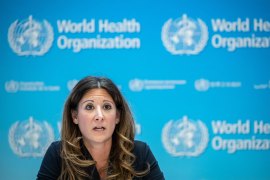Primary Care Shortage Affecting Communities As Hospitals Struggle To Keep Up
CNN reports that five years ago "roughly half the doctors leaving medical school entered the work force as primary-care physicians; just 20 percent of current medical students are planning to work in primary care."The shortage is acute in rural areas, CNN reports. Doctors are also following the health reform proceedings in Washington, with some saying the bills will affect primary care doctors - with grants and incentives to go into the field - less than specialists, who could see their practices and reimbursement change (King, 12/11).
The Omaha World-Herald: "Congress' health care overhaul may result in coverage for more than 30 million additional Americans, many of whom will seek treatment from primary care physicians. Some of those physicians already are deluged because an aging population is a sicker population, more doctors are reaching retirement age, and many young doctors are choosing to go into specialties." The Association of American Medical Colleges says there will be a primary care doctor shortage of 124,000 to 159,000 by 2025. "Medical schools are attempting to address the doctor shortage by increasing the number of physicians they produce. The association called on medical schools three years ago to increase overall enrollment by 30 percent by 2015" (Ruggles, 12/13). This is part of the Morning Briefing, a summary of health policy coverage from major news organizations. Sign up for an email subscription.






